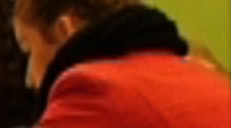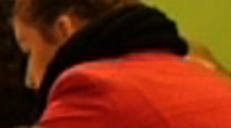
It allows to keep PV going, with more focus towards AI, but keeping be one of the few truly independent places.
-
Hi guys,
Been using 5DtoRGB and have benefitted much from the ingenuity of the software. Although there is a version that can batch transcode now, 5DtoRGB remains a post production tool. Now I have been thinking of cutting down post prod time, and am taking a hard second look at external recorders like the Atomos Ninja. When the Ninja was first released, everyone who tried it with GH2 had nothing good to say about the HDMI output. But after Panasonic upgraded the camera's firmware to v1.1, the Ninja can now read clean signals. There is a page on the Ninja website that even teaches you how to use the recorder with the camera, no more Avisynth and all that complex stuff.
My question is, is there discernible difference, between Pro Res 422 at acquisition level, and Pro Res achieved with 5DtoRGB? Those of you who have used both, do you see greater detail and smoother motion with the external recorder? if there is no difference, then shouldn't one save money and just use up a bit more time at post pro?
-
Just for anyone interested:
I've just tested importing the HBR 25 PsF material from the GH2 to FCP6 (yes, it's old software) and found that the log and transfer AVCHD plugin as well as the AVC Intra Importer both do not handle the PsF part correctly, resulting in CUE resp. deinterlacing artifacts, see image below.
5DtoRGB can solve this problem. So for FCP 6 it is a lifesaver. One thing though: make sure you use the latest version: I've tried 1.5.3b first (it's the last version for my os X 10.5) but it can't handle the studioswing of the GH2, resulting in flat images. I've installed the 1.5.9 version on my os X 10.6 machine to be able to select 'broadcast safe'.

 Afbeelding 3.png942 x 523 - 328K
Afbeelding 3.png942 x 523 - 328K
 Afbeelding 5.png941 x 522 - 362K
Afbeelding 5.png941 x 522 - 362K -
@miko Never had it crash but it takes forever to process.
-
I have problems with 5DtoRGB, the software crash very much times with GH2 footage: anybody have the same problem? I was thinking to buy the Batch version, but seem to be unusable..
-
@Petee28 I don't know about 1080 but I just did a 720-60 out of an ac130.
-
Can 5dtoRGB process the ac160a's 1080/60p?
-
It's not the question of more or newer RAM. Just damaged or not. Try to copy the private folder of your card and than check the original mts files.
Also to be on the safe side with your computer I would run the extended version of Apple's hardware test (AHT) which displayed that mine was corrupt.
-
I couldn't see it happening when I shot it. The SD card is still available, yes. Do you mean the computer's (the one importing the footage) RAM? So if I try using the computer at my work which has more, newer RAM, it could solve things?
-
@kingmixer does it happen in your play back of your mts? If so: SD card still availabe? Try to copy your files again. I had various issues similiar to yours. First damaged files during copying caused by damaged RAM, second damaged files during converting with 5DtoRGB see my posting here http://www.personal-view.com/talks/discussion/comment/75933#Comment_75933 also caused by damaged RAM Converting issues can also be caused by damaged graphic card.
-
Before you scold me, I tried searching through this thread to no avail. Has anyone had any problem like this before? Notice the bottom of the frame has some weird stuff going on in both screenshots.
This is 24H 1080p footage (CrossFire Hack) I'm importing at the 709/Full Range settings (which I've used successfully before). I guess I can just crop all the footage in AE or something, but it's weird that I'm enduring the wait of 5dtoRGB's conversion (in hopes for highest quality possible) and I have this happening.

 Screen shot 2012-08-04 at 1.46.30 PM.png1280 x 717 - 1M
Screen shot 2012-08-04 at 1.46.30 PM.png1280 x 717 - 1M
 Screen shot 2012-08-04 at 1.55.07 PM.png1279 x 717 - 1M
Screen shot 2012-08-04 at 1.55.07 PM.png1279 x 717 - 1M -
@AdR - "From what I can tell, FCP and Premiere (and other apps) sense the h.264 video, assume it's encoded as Broadcast Safe (16-235), and then helpfully stretch values from 16-235 to 0-255 to make them look better on an RGB computer monitor."
Premiere CS5.5 definitely does not do this, as it's not a color-managed application. After Effects projects, however, can be set up with ICC color profile management, and will detect the profile flags embedded in AVCHD files. If you select Rec. 709 profile in AE, it will identify GH2 files as using the same profile, and will not remap the color indexes in the video. Even if Premiere were color-managed, it would do likewise.
Both Premiere and FCP7 are legacy NLE's that assume NTSC broadcast television standards, i.e. hardware-calibrated monitors with 8-bit black-level setup at 16 (aka 7.5 IRE in analog terms). You can confirm this in Premiere by creating a black clip in a sequence and checking its level - 7.5 IRE.
In practice however, Premiere treats its color space in an "agnostic" manner. It imports clips and exports sequences via plugin codecs, accepting whatever color space they use. When you open a Premiere project in After Effects, it will examine the footage, rather than the sequence, to determine whether any color space conversions need to be done. When you then open the project again in Premiere, it simply accepts any filtering or conversions done by After Effects without question.
-
5Dmk3, ALL-I Mode, Technicolor CineStyle, 5DtoRGB Batch, FCPX, Baselight.
-
GH2 encodes 16-255, occasional values out of range are due to in camera sharpening. I did not notice any artefacts due to the stretching, at least not when rendering out fron After Effects in 32 bit mode.
Anyhow AVCHD is not what I would call "snappy" on timeline, rapid J-K-L hitting like I was used from FCP usually just stops the clip. So if you have time and space left for transcoding, at least here you can gain.
-
From what I can tell, FCP and Premiere (and other apps) sense the h.264 video, assume it's encoded as Broadcast Safe (16-235), and then helpfully stretch values from 16-235 to 0-255 to make them look better on an RGB computer monitor. In the process, they discard values from 0-15 and 236-255, and they introduce gaps into the middle of the data, which will show up as artifacts if you try some vigorous color grading.
One of the advantages of transcoding to ProRes is that it isn't h.264, so the NLE doesn't helpfully adjust the luma. What you see is what you get.
Also, are we sure the GH2 encodes 16-235? I've read on a couple of boards that it uses 16-255 like Sony cameras.
-
@rapsoe: Thanks, I've found that out too. FCP 7 L&T vs. 5DtoRGB shows no noticeable difference in the footage. The only difference I could find was between ProRes and ProResHQ.
When I have a clip that I feel doesn't quite look right, I'll probably just try importing it through 5DtoRGB just to see but I don't think FCP 7 is giving me any kind of import problems whatsoever. Definitely not a 10% loss of dynamic range. Not any loss of dynamic range. Seems like this 5DtoRGB program isn't needed for my setup but it has obviously benefitted others.
-
@DrDave The examples of Adobe interlace artifacts that I've seen posted appear to be due to incorrectly interpreted 25psF or 30psF progressive footage that was decoded as interlaced. The culprit in those cases is not Premiere Pro or After Effects, it's the braindead psF format that lacks any explicit means (i.e. metadata) of distinguishing itself from interlaced 50i or 60i footage. As a result, when importing psF footage, you should manually confirm that the footage is interpreted as progressive. While some editors use interlaced motion detection algorithms to identify psF format, this technique is not foolproof and can misidentify ambiguous footage.
Beyond that, the technical challenge of decoding chroma is that in 4:2:0 encoding it's subsampled at half the horizontal and vertical resolution of luma. What can make it even worse are rectangular edge discrepancies between adjacent macroblocks in AVCHD frames. This evil combination of digitization artifacts can often produce visibly jagged edges in the RGB pixel patterns produced by uprezzing the chroma channels to match the resolution of the luma channel.
Two things can really help minimize these kinds of artifacts: high-bitrate encoding and 32-bit decoding. In the not too distant past, you had no choice but to import your low-bitrate source video into an 8-bit video editor and make do with the results. 5DtoRGB provided a timely alternative with a chroma smoothing filter that eliminates most edge artifacts, though in some cases it may appear a little too aggressive. Adobe's solution is to decode 4:2:0 footage in 32-bit floating-point color space with mathematically precise uprezzing of the chroma channels. In my experience with high-bitrate GH2 footage, the image quality that produces makes it practical to work directly with the original footage, without need to transcode it to an intermediate format.
-
@mangomonster as nomad says, try to work with Prores, possibly HQ. if you don't use Color, but just FCP7, you can still get very good results by starting with one or more instances of the classic Color Corrector 3-way and also use one or more instances of one of the Garbage Matte filters to apply CC filters to only parts of the frame, key-framing them for values and movement as needed. Also, normally you should trust the waveform and the vectorscope more than your eyes, especially if you don't have a calibrate broadcast monitor at hand. And if you really care about replicating the 5DtoRGB look with the Nattress G Chroma Sharpen Progressive, if I remember correctly, you should set the Sharpen Amount to 25 and the Anti-Alias Amount to 50. As for replicating the contrast, I've not gone that far as coming up with values, as the Chroma issue was already enough of a show stopper for me, but from what I remember from looking at the waveform, I don't think you would need more than one instance of the CC3Way to do that.
I understand that this subject matter might sound very confusing if you spend too much time researching and don't try enough for yourself. If you take with a grain of salt all you read on the web (including this very same post) you will be spared from going insane. In particular, I suggest you use an entire truck of salt when reading statements made by the guy behind eoshd.
-
I don't subscribe to the concept of tweaking 8 bit footage too much. So, IMHO every single step of change you can avoid is a good thing. Since most of us agree that GH2 is delivering broadcast range, use that setting in 5DtoRGB and convert to a high quality codec like DNxHD, ProRes etc. and go on from there.
Anything you need to change should be done to this footage.
If you are used to Color and want to spend some money on Greaeme's filters, you should be able to get very similar results when working with L&T, since any YUV footage is treated in much higher precision in FCP and Color.
-
@rapsoe: I'm curious what filters you generally use in FCP7 if you just import with Log & Transfer to give you a similar look as 5dtoRGB? How can I tell if I'm in a 709 space or 601? I feel like my image is quite contrasty using L&T.
Not being a colorist or fully understanding all of the color engineering terms being thrown around, I wonder if it's better to use 5DtoRGB or just throw a couple filters onto my L&T transcoded footage in FCP7 to get me the same look... seems like it would be faster if it's true that 5DtoRGB isn't very quick with the transcoding.
It's just that after reading articles like this: http://www.eoshd.com/content/8612/mac-avchd-gamma-issues-the-fix?utm_source=feedburner&utm_medium=feed&utm_campaign=Feed%3A+EOSHD+%28EOSHD.com%29
I have no idea what to do... I don't see input/output adjustments in any of my filters in FCP7 to try out what he's saying. I'd rather not use 5DtoRGB if I can understand how to get the most dynamic range in my final product (if in fact it is just a color space or gamma issue that can be fixed as easily in color correction as in import).
Thanks for any help. I've read every comment on this page and as with many things, clear and simple answers are elusive
-
@DeShonDixon unfortunately no, at least not that I know of or could find via google.
-
@Sangye Do they have anything for PC?
-
@DeShonDixon Yeah, if you buy 5DtoRGB Batch (available on Mac App Store).
-
Can you convert multiple files in 5dtorgb?
Howdy, Stranger!
It looks like you're new here. If you want to get involved, click one of these buttons!
Categories
- Topics List23,911
- Blog5,718
- General and News1,330
- Hacks and Patches1,148
- ↳ Top Settings33
- ↳ Beginners254
- ↳ Archives402
- ↳ Hacks News and Development56
- Cameras2,342
- ↳ Panasonic984
- ↳ Canon118
- ↳ Sony154
- ↳ Nikon95
- ↳ Pentax and Samsung70
- ↳ Olympus and Fujifilm98
- ↳ Compacts and Camcorders295
- ↳ Smartphones for video96
- ↳ Pro Video Cameras191
- ↳ BlackMagic and other raw cameras116
- Skill1,959
- ↳ Business and distribution66
- ↳ Preparation, scripts and legal38
- ↳ Art149
- ↳ Import, Convert, Exporting291
- ↳ Editors190
- ↳ Effects and stunts115
- ↳ Color grading197
- ↳ Sound and Music280
- ↳ Lighting96
- ↳ Software and storage tips266
- Gear5,407
- ↳ Filters, Adapters, Matte boxes344
- ↳ Lenses1,577
- ↳ Follow focus and gears93
- ↳ Sound496
- ↳ Lighting gear313
- ↳ Camera movement230
- ↳ Gimbals and copters302
- ↳ Rigs and related stuff271
- ↳ Power solutions83
- ↳ Monitors and viewfinders339
- ↳ Tripods and fluid heads139
- ↳ Storage286
- ↳ Computers and studio gear559
- ↳ VR and 3D248
- Showcase1,859
- Marketplace2,834
- Offtopic1,314










